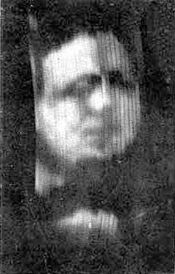Template:Are You Sure/October 2: Difference between revisions
No edit summary |
No edit summary |
||
| Line 1: | Line 1: | ||
[[File:Photo of Televisor - John Logie Baird's moving image transmission system.jpg|thumb|175px|link=John Logie Baird (nonfiction)|The first known photograph of a moving image produced by '''[[John Logie Baird (nonfiction)|John Logie Baird]]''''s "televisor", as reported in ''The Times'', 28 January 1926 (The subject is Baird's business partner Oliver Hutchinson.)]] | |||
• ... that engineer and inventor '''[[John Logie Baird (nonfiction)|John Logie Baird]]''' (14 August 1888 – 14 June 1946) pioneered mechanical television, demonstrating the first working television system on 26 January 1926; and that Baird invented both the first publicly demonstrated color television system, and the first purely electronic color television picture tube; and that in 1928 the Baird Television Development Company achieved the first transatlantic television transmission? | |||
• ... that mathematician '''[[John Crank (nonfiction)|John Crank]]''' (6 February 1916 – 3 October 2006) was a mathematical physicist, best known for his work on the numerical solution of [[Partial differential equation (nonfiction)|partial differential equations]]. | • ... that mathematician '''[[John Crank (nonfiction)|John Crank]]''' (6 February 1916 – 3 October 2006) was a mathematical physicist, best known for his work on the numerical solution of [[Partial differential equation (nonfiction)|partial differential equations]]. | ||
Revision as of 15:46, 2 October 2020

• ... that engineer and inventor John Logie Baird (14 August 1888 – 14 June 1946) pioneered mechanical television, demonstrating the first working television system on 26 January 1926; and that Baird invented both the first publicly demonstrated color television system, and the first purely electronic color television picture tube; and that in 1928 the Baird Television Development Company achieved the first transatlantic television transmission?
• ... that mathematician John Crank (6 February 1916 – 3 October 2006) was a mathematical physicist, best known for his work on the numerical solution of partial differential equations.
• ... that philosopher and scientist Bernardino Telesio (7 November 1509 – 2 October 1588) expressed anti-Aristotelian views which angered Church authorities; and that while Telesio's theories were later disproven, his emphasis on observation made him the "first of the moderns" who eventually developed the scientific method?
• ... that mathematician Édouard Lucas (4 April 1842 – 3 October 1891) studied the Fibonacci sequence, and that the related Lucas sequences and Lucas numbers are named after him?